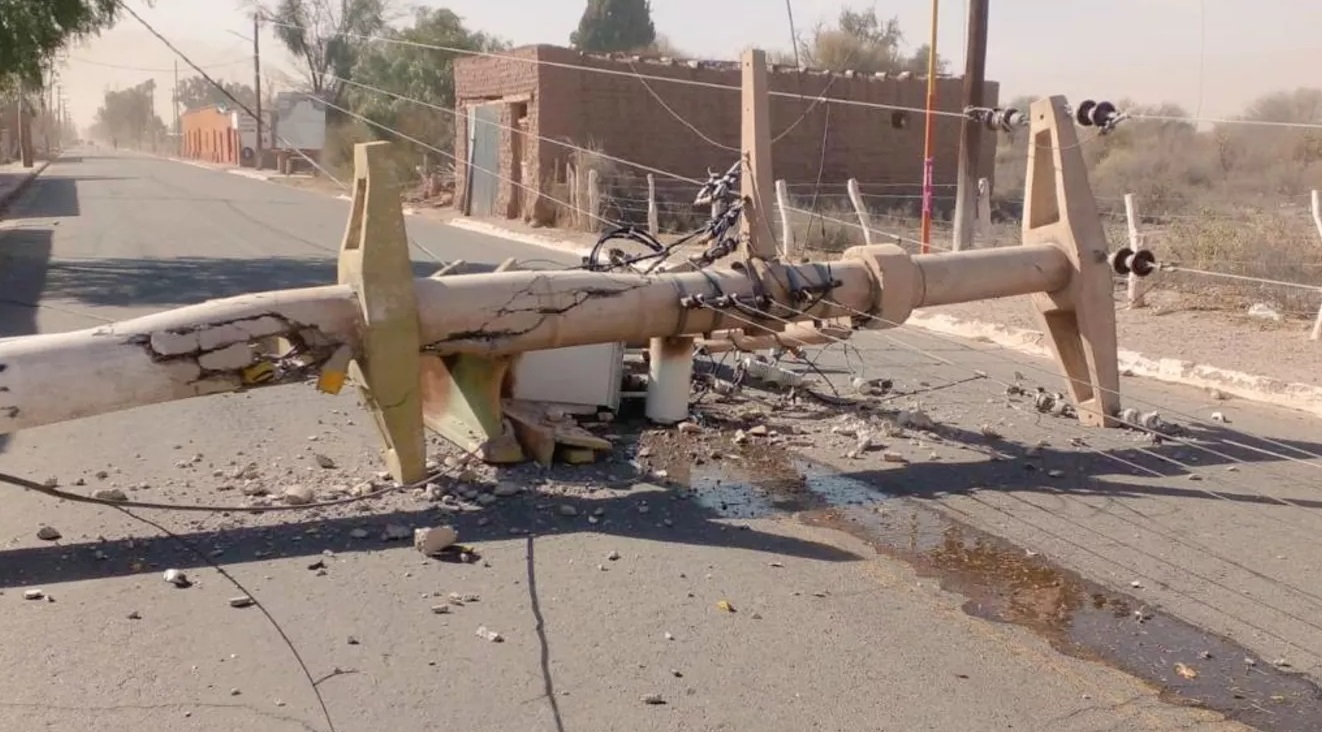

Zonda winds usually cause havoc in western Argentina and will blow with extraordinary force due to the complex meteorological situation on Monday | file
Argentina’s National Meteorological Service has issued a red alert for Zonda (dry and hot) winds descending from the Cordillera. The notice is effective Monday for the provinces located in the Cuyo region in western Argentina. The Zonda wind bout was so severe that it prompted SMN to issue a warning of severe dry and hot winds even in the province of Córdoba, in the center of the country.
Western provinces such as Mendoza, San Juan, San Luis and La Rioja should be punished severely by Monday’s Zonda winds, which can reach extraordinary intensity. Wind gusts near 100 km/h should be expected in many cities in these provinces with gusts in excess of 120 km/h (hurricane force) at some points.
Extremely strong Zonda winds are expected to cause dust storms with severely reduced visibility, plant fires, roof and collapse structures, power outages, and downed trees and poles.
From Saturday afternoon and throughout Sunday, Zonda winds lashed San Juan hard amid a red alert forecast for gusts that could exceed 120 km/h from Monday.
According to San Juan Civil Defense, Jáchal was the department that recorded the most damage as a result of winds over the weekend with downed power lines and downed trees. There were also vegetation fires due to the strong, dry and hot winds.
⚠ New update #sat ⚠
Sun 20 |
🔴 Keep the red alert level on for # flood y # Snowfall to the mountain rangecolor 21 |
🔴 Red Level Alert added by # Zonda To Mendoza, San Juan and La RiojaInformation about https://t.co/GRjfngFWuF pic.twitter.com/oyqZzgRsoM
– SMN Argentina (@SMN_Argentina) August 20, 2023
The Zonda winds are favored by a very intense jet stream at high levels with winds of more than 300 km/h at an altitude of more than ten thousand meters, which favors a gust of heavy rain in Chile and meters of snowfall in the mountain range, and even there is a deep center of low pressure In western Argentina with an intense jet stream at low levels in the interior of the continent.
What is the wind of Zonda?
The Zonda is a typical wind that comes from western Argentina and is characterized by stability and strong winds. It is very hot and very dry, often reducing the relative humidity to values below 5% to 10%. The Zonda descends from the Andes Mountains and its predominant direction is west.
This usually happens when there is instability on the other side of the Andes, on the Chilean side of the mountain range. Gusts of over 100 km/h can occur and there are usually problems such as lack of lighting, roofs and fallen trees as well as a high risk of fire. The temperature rises sharply, especially in the Mendoza region.
According to Argentina’s National Meteorological Service, a zonda is produced when moist air from the Pacific Ocean rises over the Andes, leaves its moisture on the Chilean side and descends on the Argentine side with very dry air that quickly heats up as it descends. In the Argentine sector of the mountain range.
🔔 Attention! Straw alert # Zonda For Cuyo and NOA counties.
Intense bursts, increased temperature and dehydration are characteristic of this phenomenon.
Don’t miss the video with essential preparedness and safety tips
+ Info | https://t.co/GRjfngFWuF pic.twitter.com/xcBtGwnGnT– SMN Argentina (@SMN_Argentina) August 20, 2023
SMN confirms that it can occur at any time of the year, but it is most frequent between May and August. According to the Argentine Meteorological Agency, it is more common in the afternoon than at other times of the day. Sometimes it does not reach the surface and is called the “elevation zone”.
A similar phenomenon occurs in other parts of the world that have mountain ranges with different names. These are the cases of the Chinook in the United States and Canada, the Fuhn in the European Alps, the Canterbury in New Zealand, and the Berg wind in South Africa.
Zonda affects people
According to SMN, the Zonda winds have effects on humans and that these are studies by so-called meteorologists. The agency says that dry and extremely hot winds can cause changes in heart rate, irritability, pain and depression, which has already been documented in many studies in different parts of the world.
In addition, there are studies indicating an increase in the incidence of traffic accidents and deaths from heart attacks, violent acts and criminals. In Europe, legislation even considers the occurrence of a faun wind, when judging offenses committed under its influence.
Rio Grande do Sul has winds similar to Zonda
MetSul meteorologist Luiz Fernando Nachtigall explains that the physical process that gives rise to winds in western Argentina is known as static heating, in which air as it descends from a mountain with strong winds compresses and heats up, causing the temperature to rise.
“It is the same process that brings heat during the night and dawn with northerly winds in Santa Maria and in the valleys of the Rio Grande do Sul when there is a jet stream at low levels that precedes the cold front or is accompanied by hurricane formation,” Nachtigall highlights.
According to MetSul meteorologists, very strong to very hot and dry winds should reach part of Rio Grande do Sul during Tuesday with gusts that can range between 70 km/h and 90 km/h, but higher in the isolation. Storms can be very strong in the Santa Maria area, for example, and problems cannot be ruled out.

“Proud explorer. Freelance social media expert. Problem solver. Gamer.”






